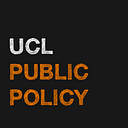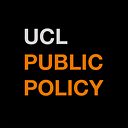Reaching the Sustainable Development Goals through Computational Social Sciences
Since 2015, national and local governments around the world have been constructing new development indicators to track their progress towards the United Nations 2030 Agenda of the Sustainable Development Goals (SDGs). In the international community, this has become a common practice inherited from previous global initiatives such as the Human Development Report and the Millennium Development Project. Development indicators are typically used to –ex-post– evaluate outcomes. However, governments could take greater advantage of them, for example, to –ex-ante– understand how some policy priorities are more or less effective in reaching specific development goals. This particular problem, often referred to as policy prioritisation, is especially challenging due to complex interconnections between policy issues, uncertainties in the policymaking process, and a variety of incentives and behaviours that give place to inefficiencies in the use of public funds.
To tackle this complex challenge, we are currently developing computational social science methods in collaboration with the United Nations Development Programme (UNDP)– the official voice of the SDGs — and with The Alan Turing Institute– the UK’s national institute for data science and AI. This project is an example of what computational social sciences have to offer when harnessing big and small data for the public good. One Example is, at the Alan Turing Institute, I am currently running the research project of Policy Priority Inference(PPI), which consists of developing analytic methods to estimate how governments allocate public resources across many different policy issues to achieve specific development goals.
PPI consists of a computational model of the policymaking process; the same process that generates the development-indicator data constructed by governments around the world. The inference part in PPI comes from the fact that there does not exist proper quantitative information on how governments prioritise public policies, so we need to estimate it through a simulation model that is built on relevant and empirically valid social theory. You can think of a simulation in PPI as something similar to a football video game. For example, artificial players in an opposing football team wish to win by taking the ball from you and scoring against your team. Similarly, the policymaking agents in PPI are given some resources (e.g. ball, players) to advance the relevant indicators, so they can decide how efficiently to use them. This is a typical trade-off that agencies or public servants face when balancing reputational benefits (e.g. being accountable) and personal gains (e.g. hiring friends, not investing in more capacity or by being corrupt and diverting some of the funds for personal projects).
Last year, my collaborator Gonzalo Castañeda and I published a series of papers applying PPI to various topics of societal relevance (e.g. corruption, policy coherence, ex-ante evaluation). Due to PPI’s potential as a tool to advise governments on reaching the SDGs, these publications led to interactions with the UNDP for Latin America and the Caribbean. In our original formulation, PPI could only consider positive interactions between policy issues, so the UNDP asked us to adapt it to the SDG framework, where negative interdependencies are crucial to understanding sustainable development.
To give you an example of these interlinkages, suppose a government succeeds in improving the vaccination rate of children who go to elementary school, as well as the transportation infrastructure of the rural communities where they live. Now, these children will be healthier due to the vaccines and less tired because they can take a public bus to school rather than walking for hours. As a result, they will perform better in the school tests. So, we see an improvement in educational outcomes without directly intervening in educational policies. These positive spill overs are often referred to as synergies and are quite common between socioeconomic topics. The opposite type of interdependence –trade-offs– is typical of interactions between economic and environmental factors. For example, increased manufacturing output worsens air quality. Because they affect the outcomes of the very indicators that governments use to evaluate interventions, synergies and trade-offs are at the heart of the policymaking process. Thus, revamping PPI to account for negative interlinkages is a natural research avenue with great potential for policy impact.
This year, the UNDP has been supporting the adaptation of PPI to the SDGs, and its application to a case country: Mexico. This nation is particularly well-suited to use PPI because new local and federal governments took office in December 2018 and, by law, they have to publish a development plan for the next six years. In brief, these development plans convey the aspirations that each administration has in terms of development, and the strategies to achieve them. The federal case is particularly interesting because it expresses those aspirations in terms of specific development indicators and the values that the government wants to achieve by 2024. You do not need to be a Spanish speaker to see, in the figure below, the high-specificity of these development goals, covering topics such as carbon emissions (SDG 13), energy (SDG 7), descent work (SDG 8) and access to public health (SDG 3). Furthermore, these goals have partly been established to align with the 2030 SDG Agenda, so using PPI to explore the effectiveness of different policy priorities towards the SDGs is extremely relevant.
Basic translation: indicador = indicator, descripción = description, lína base = baseline, meta = goal
The project is not only about models and data analysis, but it has stakeholders at its heart. For instance, during last May we ran two workshops with officials from different federal offices. These included the Treasury and the Presidency and took place at Mexico’s National Laboratory for Public Policies. The workshops allowed our stakeholders to learn about PPI and how it can be harnessed by their organisations on the one hand and helped enrich the data for our research on the other. We also worked with representatives of local authorities and autonomous institutions such as the national statistics bureau.
In the new PPI we introduced the concept of instrumental and collateral indicators. The former represents policy issues for which explicit instruments and dedicated resources exist, so government policies have a direct effect on them (e.g. policy priorities are defined on these themes). The latter are topics for which there are no policies, so their improvement takes place through said spill over effects. Which indicators are instrumental and which ones are collateral depends on each country and government, so the expertise and experience from public servants proved extremely useful to classify the data. By the end of the year, the project will deliver a methodological report introducing the new PPI, now called Policy Priority Inference for Sustainable Development, and two technical reports with case studies at the federal and local levels. It will also provide new data on development indicators and open source code.
Social science can shed unique insights into the SDGs and our work powerfully shows that –when you have a good alignment between computational social science, the SDGs and policy stakeholders– the goals for a better and more sustainable future for all can be achieved. So, the PPI programme will continue to grow in the future as we strengthen ties with the UNDP and other organisations such as the Global Initiative for Fiscal Transparency, and as we continue to talk to more governments and organisations that have expressed their interest.
Dr Omar A. Guerrero (@guerrero_oa) is a Senior Research Fellow at the Department of Economics in University College London and at The Alan Turing Institute, the UK’s national institute for data science and AI.
If you wish to learn more about PPI, you can watch a presentation on You Tube. You can also download a brochure prepared for the UNDP or access all the publications in the PPI website.

